Fried rice with kimchi is a delightful fusion of tangy, spicy, and savory flavors that will tantalize your taste buds. This kimchi fried rice recipe is incredibly easy to make, featuring fermented kimchi and tender chunks of tuna, it's perfect for a quick weekday meal or a quick snack.
If you're a fan of bold, umami-rich dishes, you'll aso love my quick gochujang fried rice and crispy gochujang brussels sprouts.
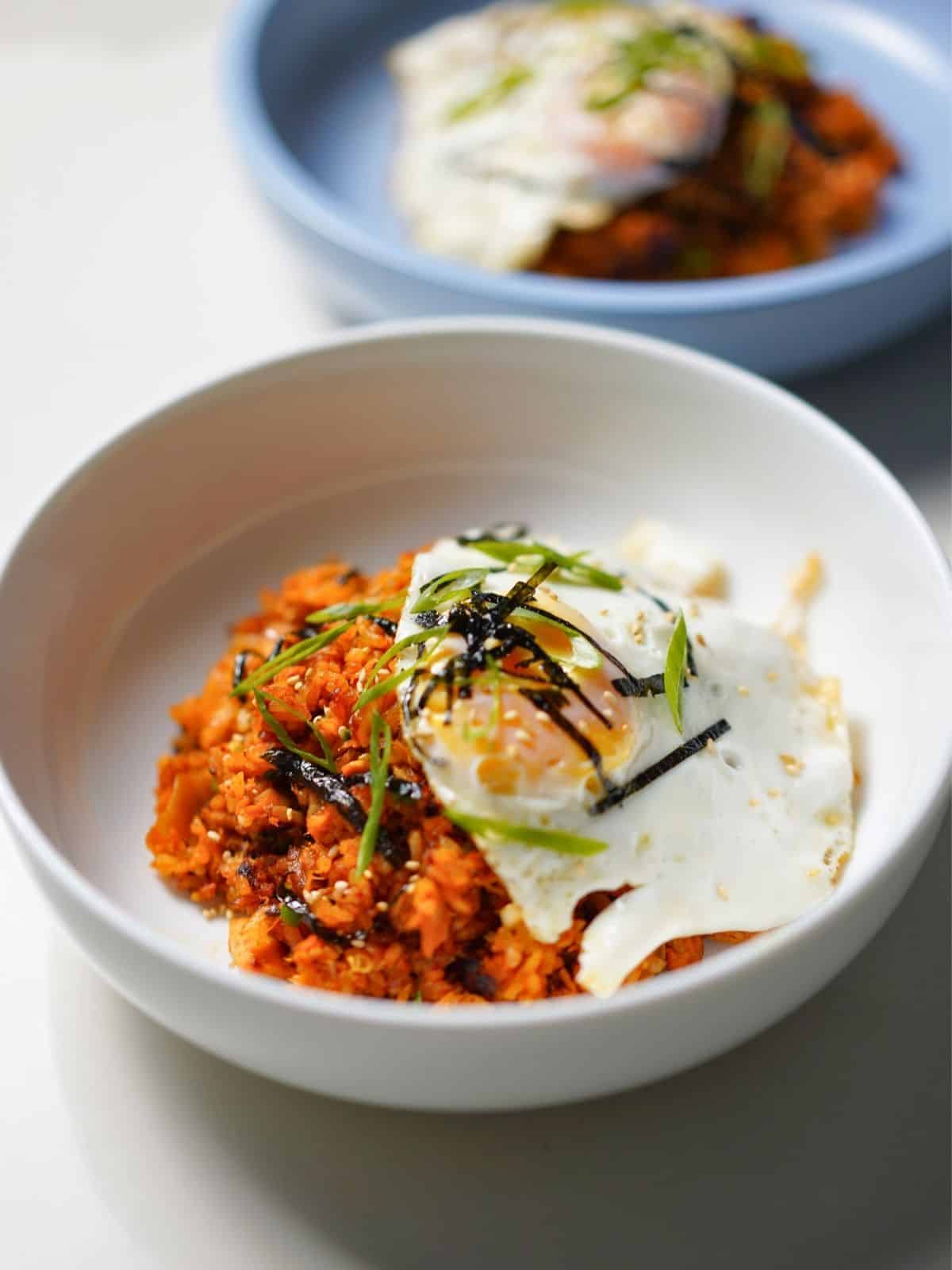
Jump to:
✔️ Why This Recipe is Great
Packed with Flavor: This Korean dish is flavorful and perfect for a quick and easy meal. The combination of spicy kimchi, savory tuna, and fluffy rice creates an explosion of filling flavors in your mouth.
Saving Leftovers: It's a great way to use leftovers, from yesterday's rice and your oldest kimchi to any canned tuna in the back of your pantry. Plus, it's a versatile dish that can be made with other protein sources such as chicken, beef, or tofu.
Easy Recipe: Ready in about 20 minutes, this is one of the best to-go meal for busy weekdays or a lazy weekend lunch, both packed with protein and a great way to clean out the fridge.
🍳 Ingredients
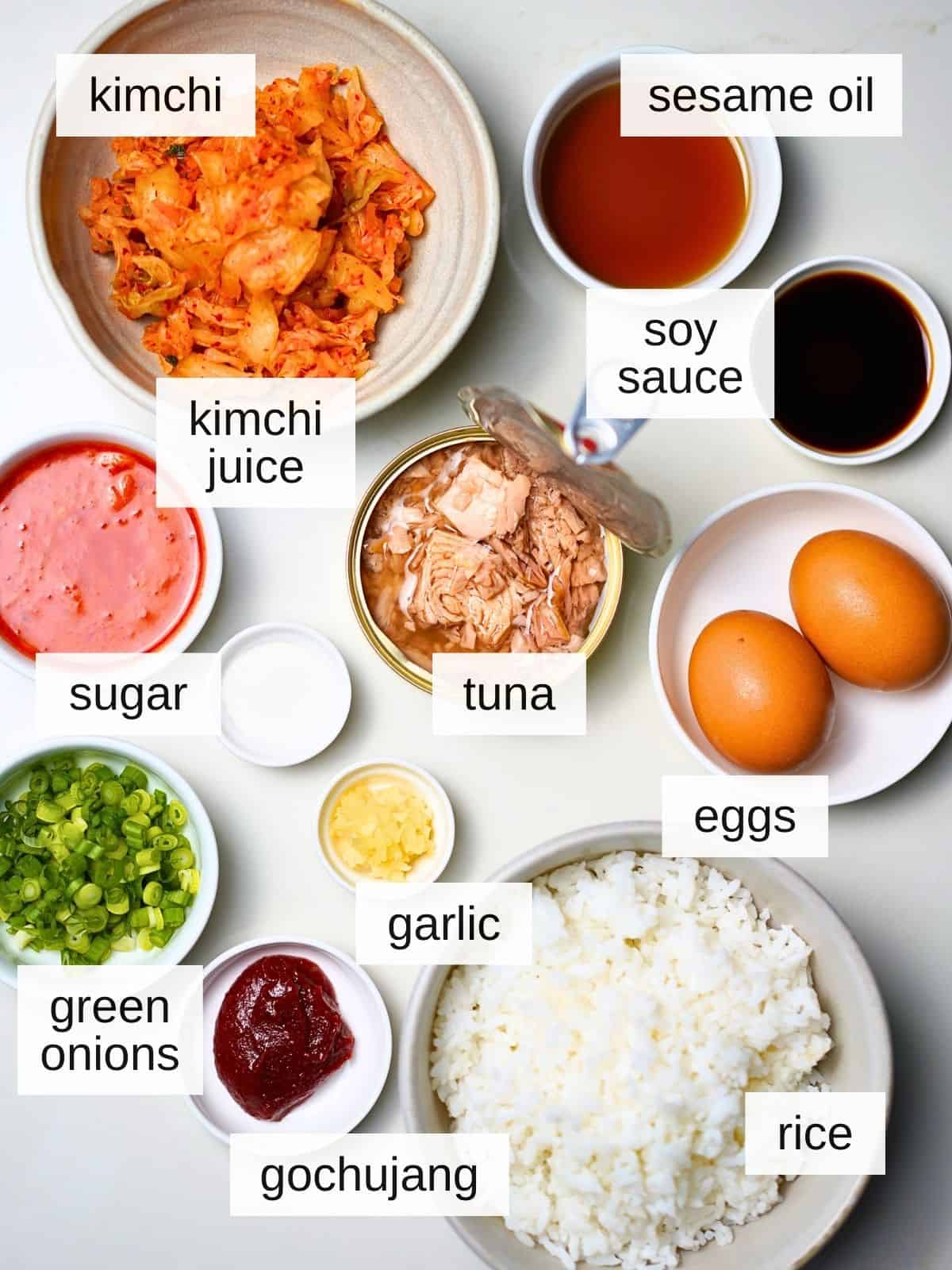
Kimchi: this is the main ingredient in this dish and gives it its signature flavor. Make sure to use good quality kimchi for best results.
Sesame Oil: adds a savoriness and some healthy fats to the dish.
Kimchi Juice: this is the liquid that comes from your jar of kimchi and will add extra flavor to the dish. Do not discard it!
Tuna: this recipe calls for canned tuna, but you can also use fresh or frozen tuna if desired. Just make sure to cook it thoroughly before adding it to the rice, ideally chopped up.
Soy Sauce: you can use regular soy sauce, or use tamari or coconut aminos for a gluten-free option. It adds a salty umami flavor to the dish.
Green Onions: for garnish and added flavor; techinically optional, but highly recommended.
Gochujang: a Korean red chili paste that adds a spicy, sweet, and savory flavor to the dish. This is spicy, so adjust the amount to your taste.
Rice: you can use any type of rice for this dish. For the best texture, try cooking it the day before and storing it in the fridge overnight for fluffy rice.
See recipe card for exact ingredients and quantities.
🐟 How to Make Kimchi Fried Rice with Tuna (Step-by-Step)
Step 1) Heat a large skillet or wok over medium heat and add the sesame oil. Swirl to coat the pan (image 1).
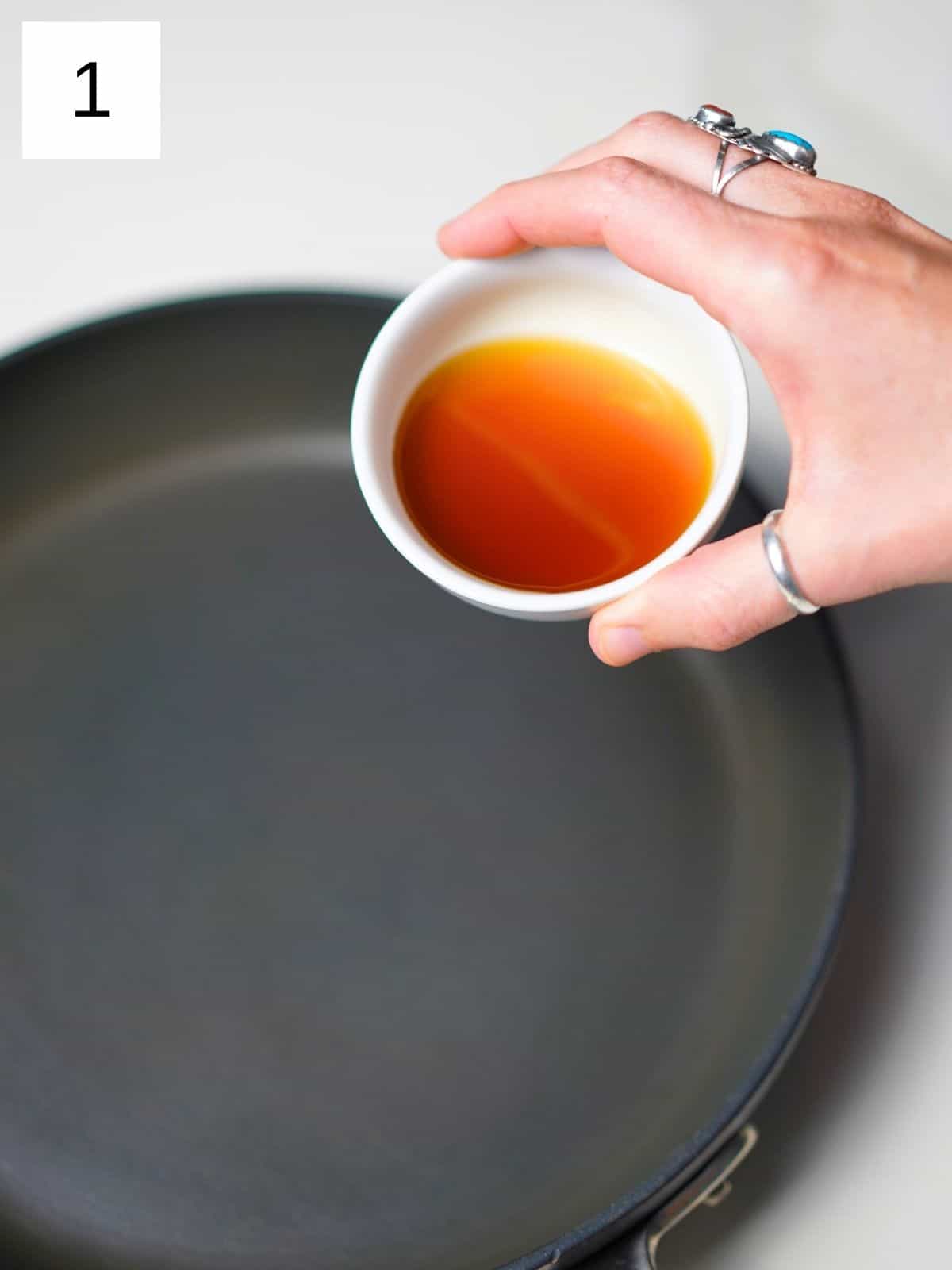
Step 2) Toss in the minced garlic and sauté until fragrant, about 30 seconds (image 2).
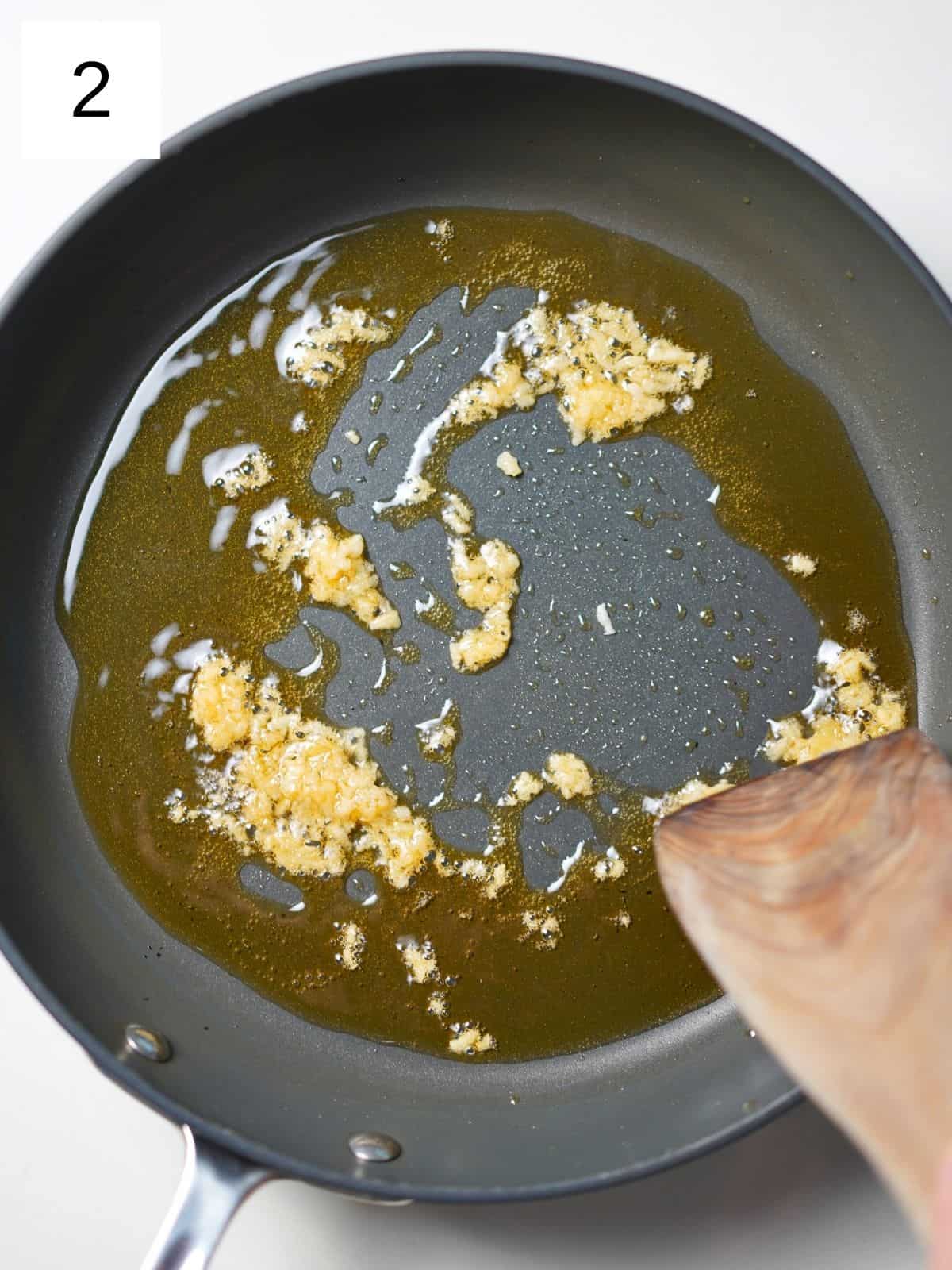
Step 3) Add the chopped kimchi and cook for a couple of minutes until it starts to soften (image 3 & 4).
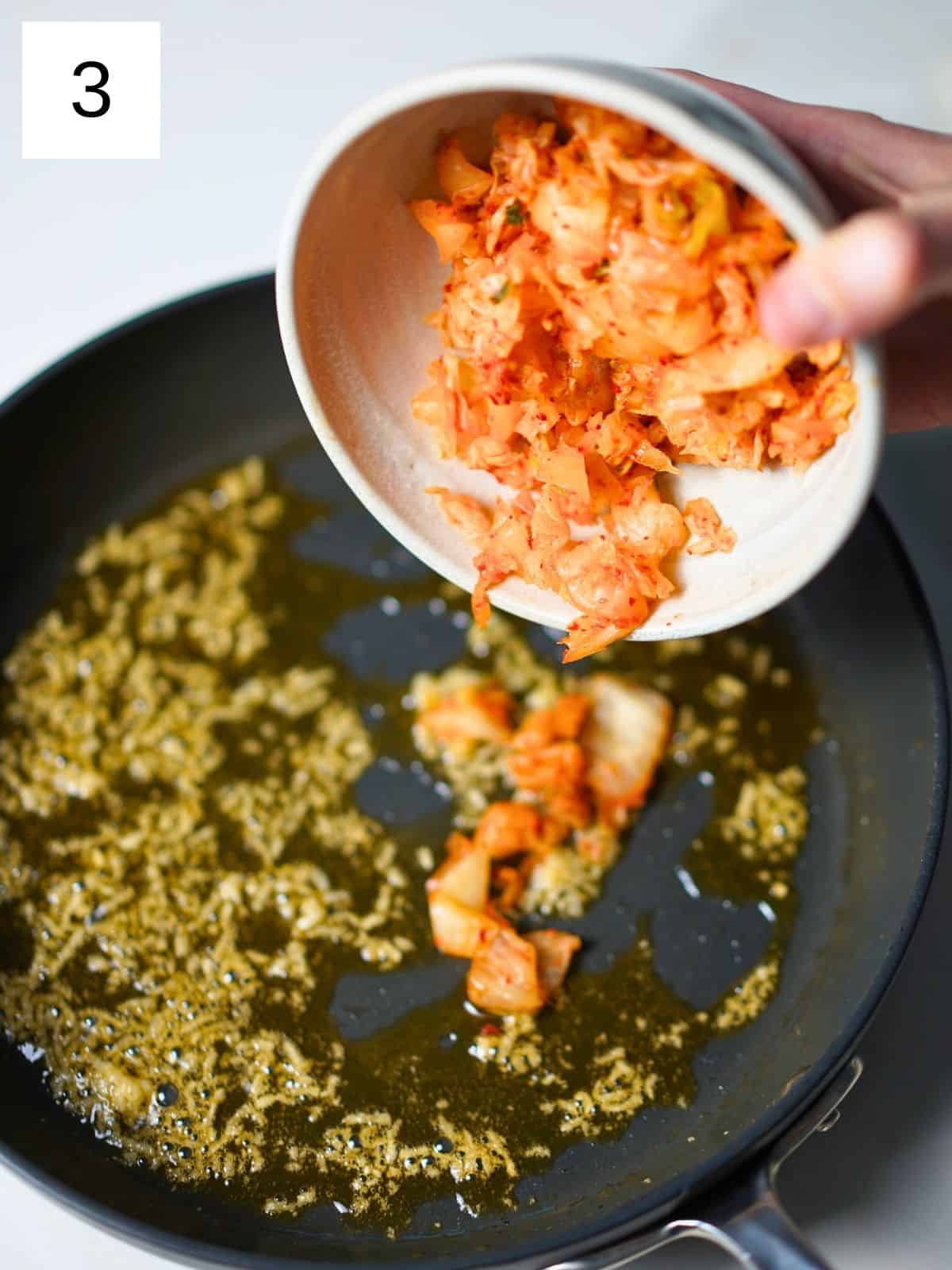
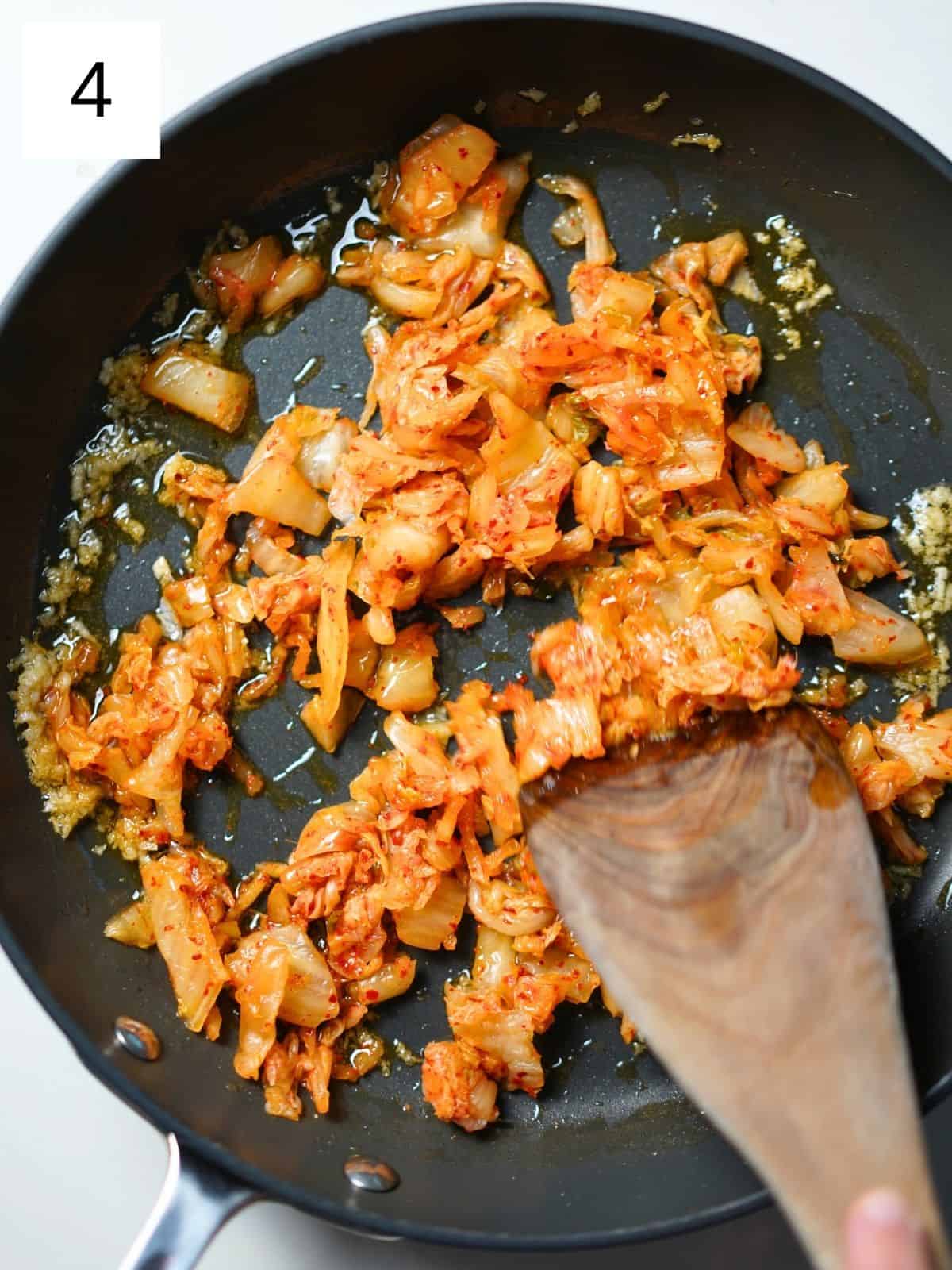
Step 4) Stir in the drained tuna, breaking it into chunks, and cook for another minute (image 5 & 6).
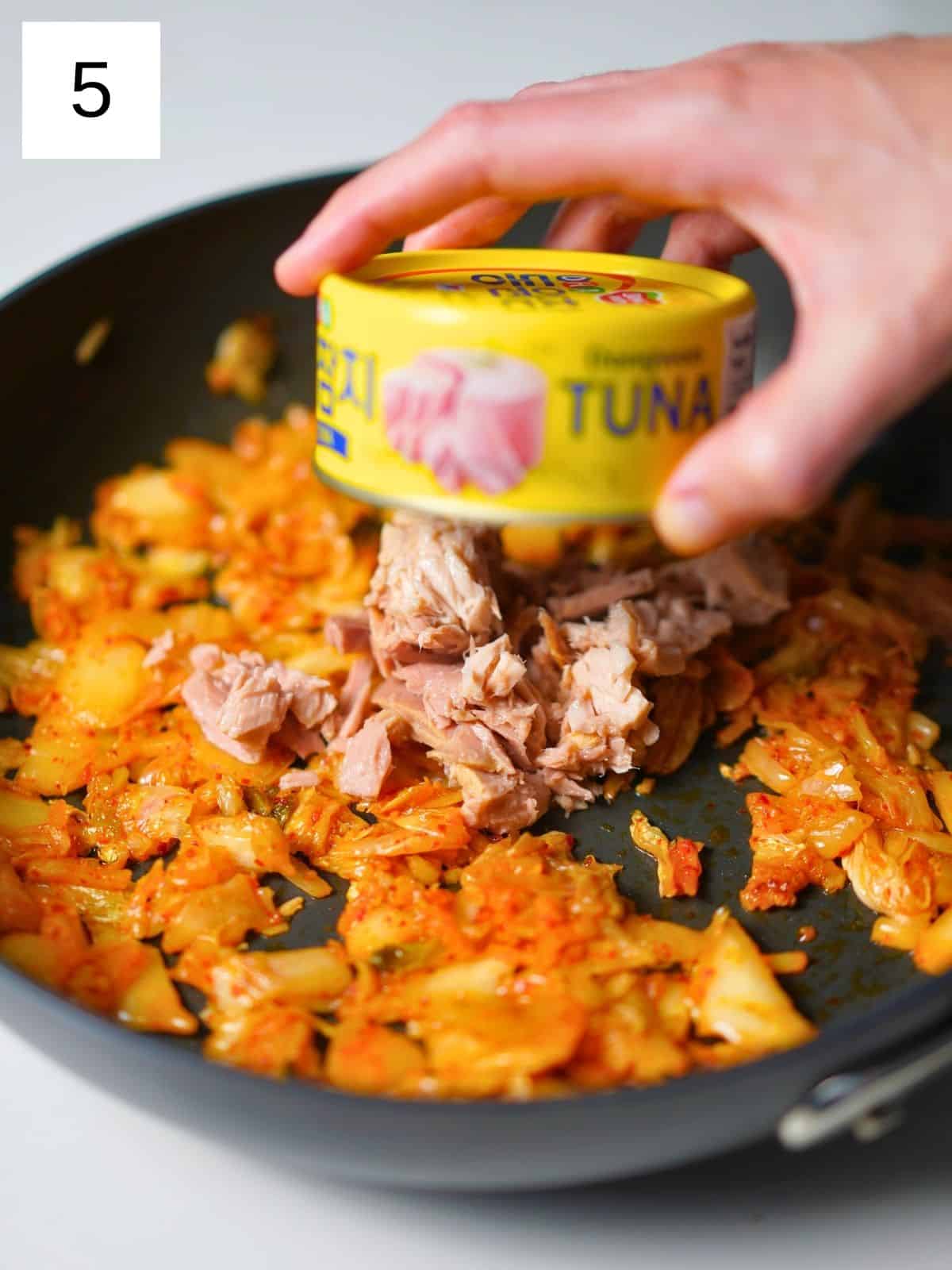
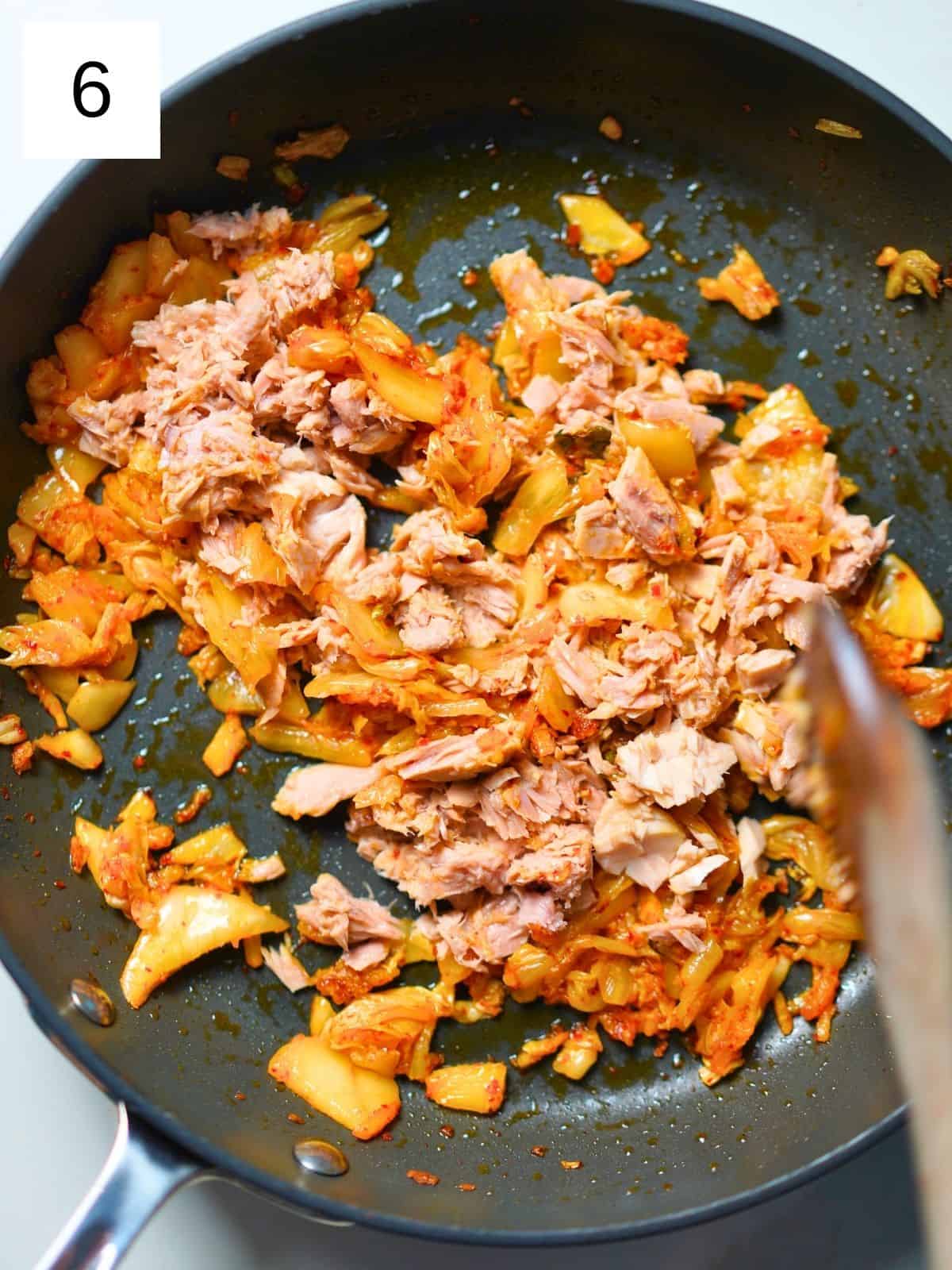
Step 5) Increase the heat to high and add the cooked rice to the pan, stirring to combine everything evenly (image 7 & 8).
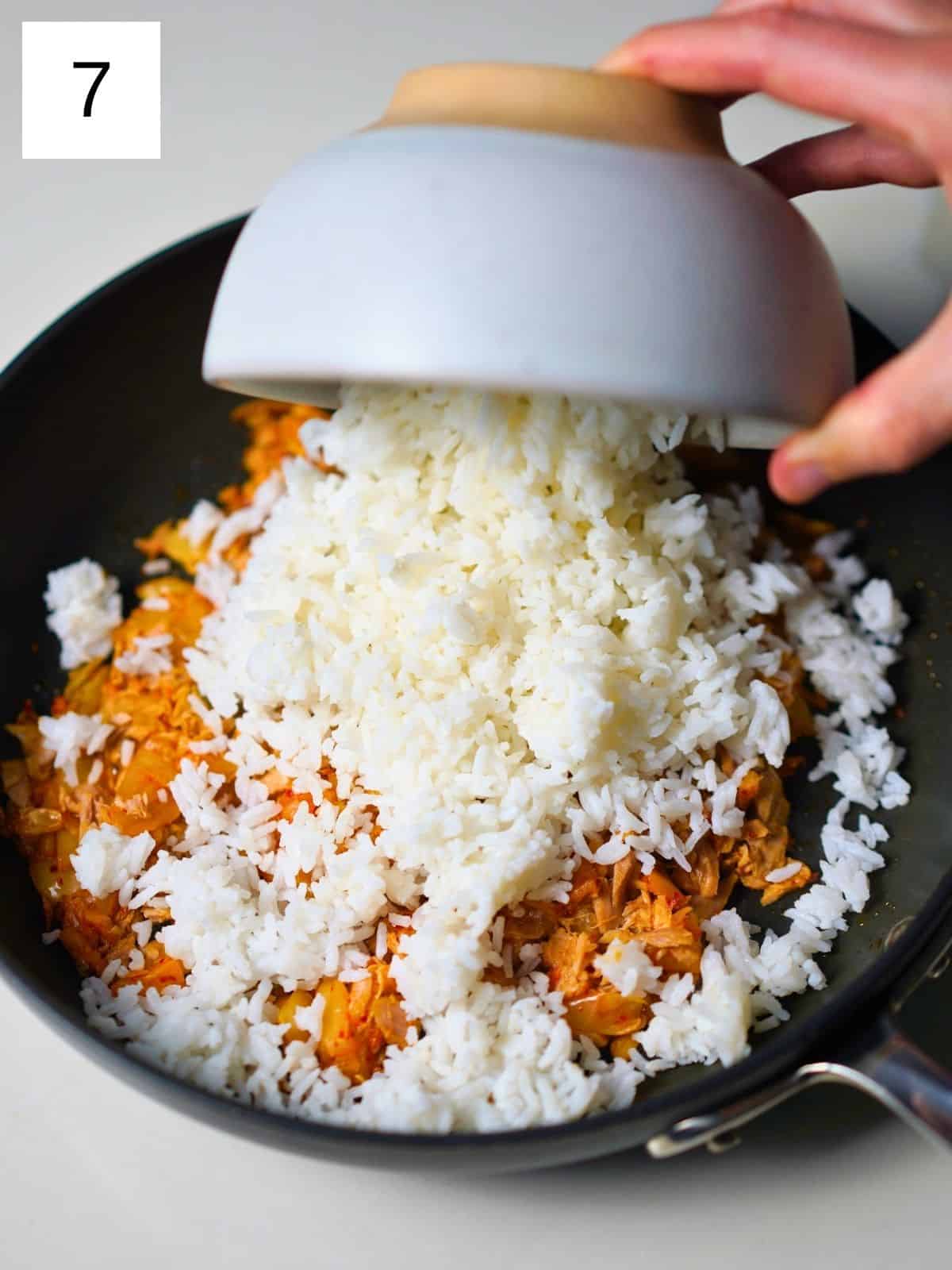
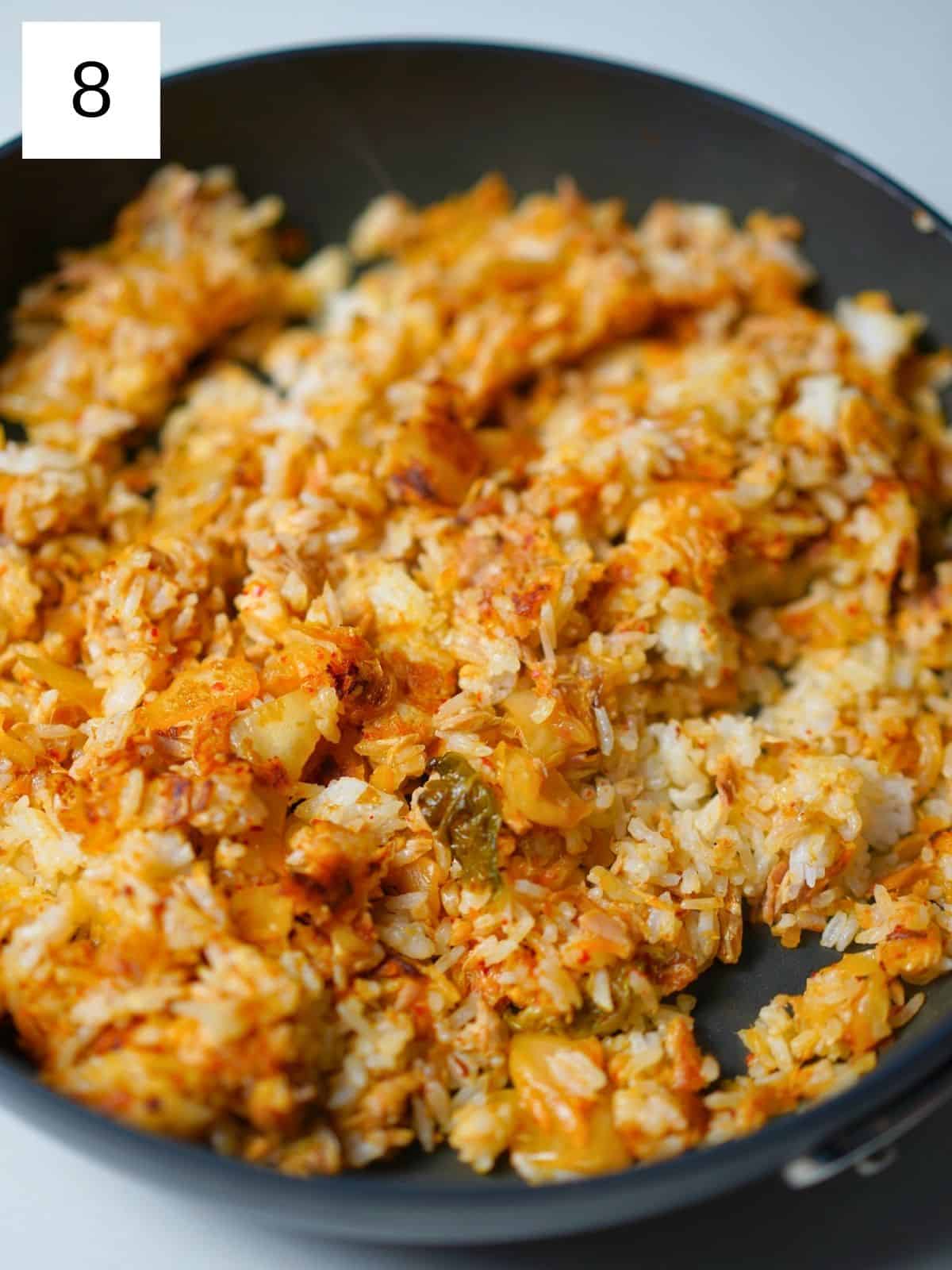
Step 6) Drizzle in the kimchi juice, soy sauce, and sugar, mixing well. If you're using gochujang for the extra kick of heat, add it now, as well (images 9 - 12).

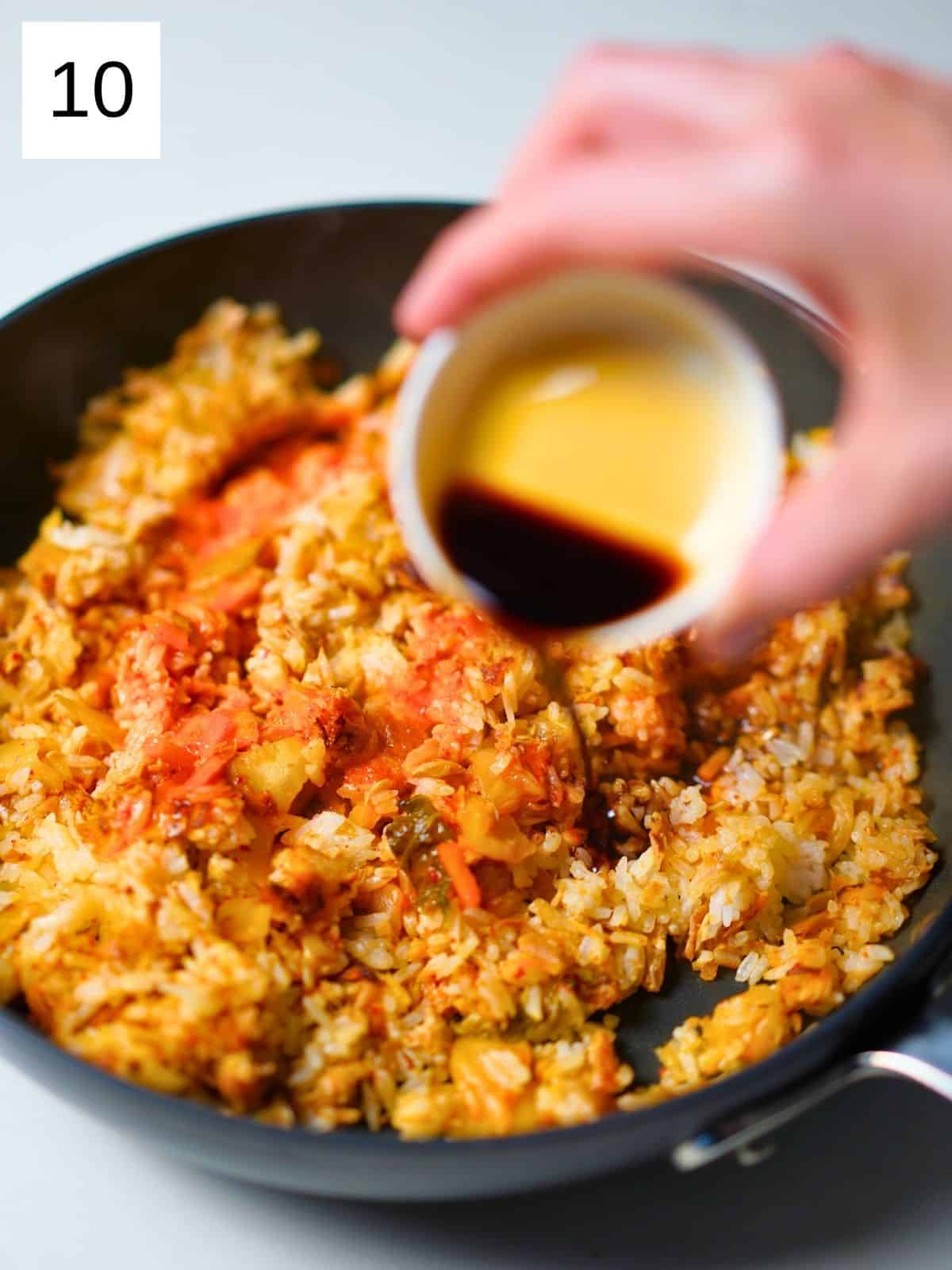

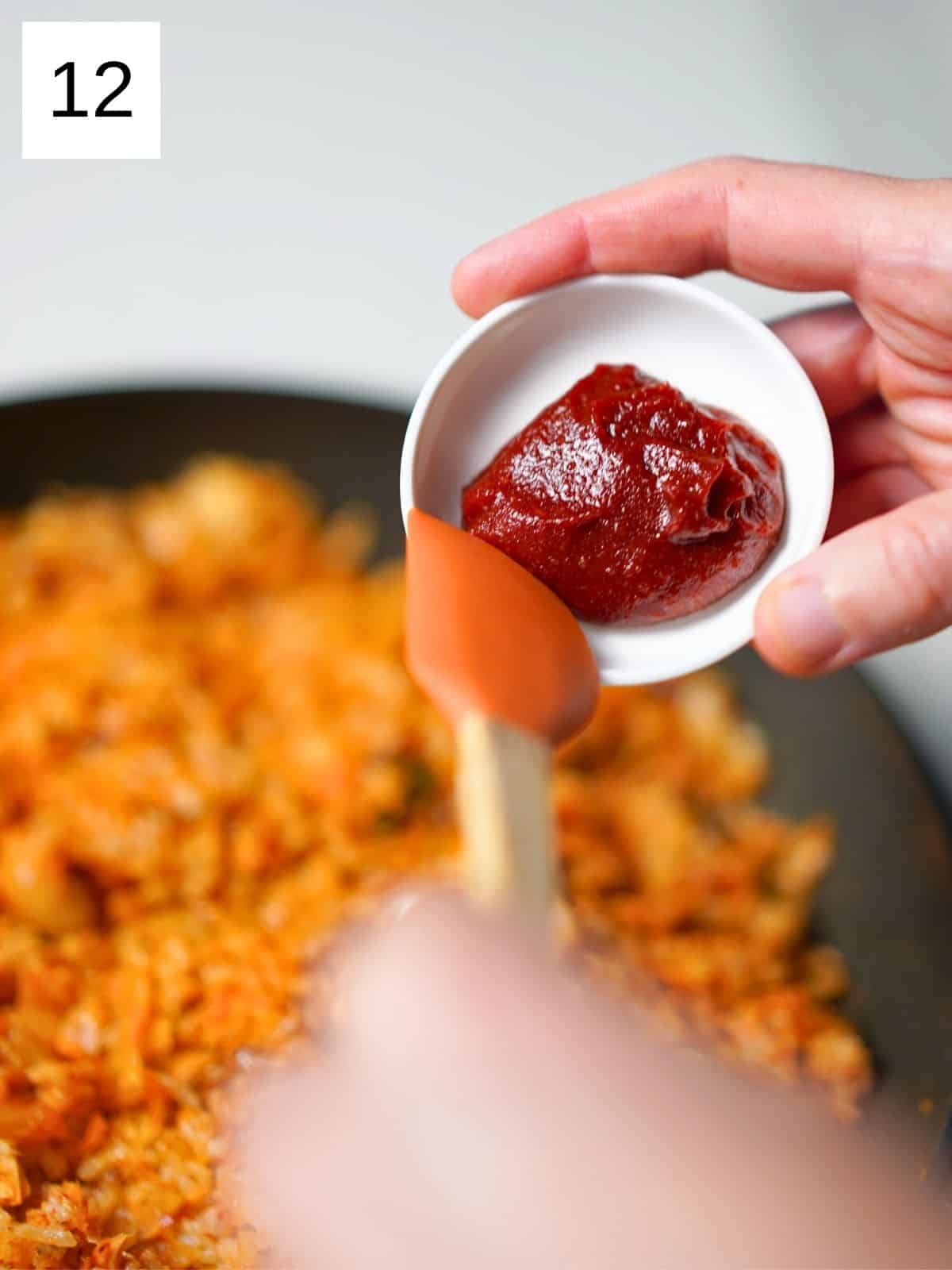
Step 7) Cook for 5-7 minutes, stirring occasionally until everything is heated through and the rice starts to get a little crispy on the edges (image 13).

Step 8) In the meantime, fry the eggs to your liking in a separate pan. If you like your fried rice to have the egg evenly distributed throughout, crack both eggs into a small bowl and break the yolks to mix them together like you’re making an omelet, and then pour it over the eggs about 2 minutes before your kimchi fried rice is cooked to your desired crispiness (image 14).

Step 9) Once the fried rice is done, take the pan off the heat and season with salt and pepper to taste, mixing in the green onions. Serve tuna kimchi fried rice hot, topped with a fried egg, a sprinkle of sesame seeds, and, if you like, some seaweed strips for an added touch of nutrition (image 15).
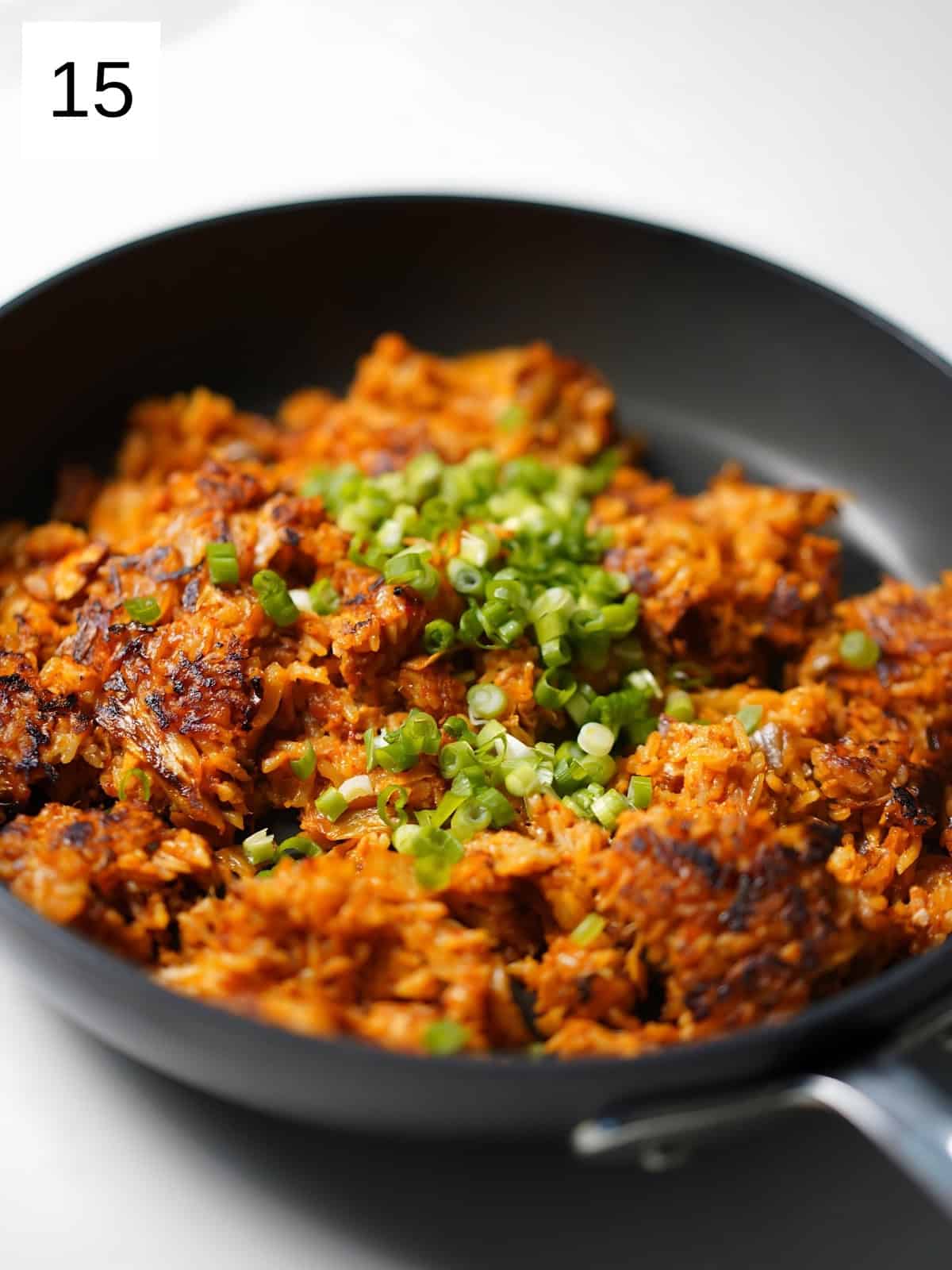
Pro-tip: Use day-old rice or rice that has been chilled in the fridge for at least a few hours. Freshly cooked rice will be too soft and sticky for this kimchi fried rice.
🌟 Variations
- Vegetarian - swap out the tuna for tofu or tempeh. Make sure to press and marinate the tofu to absorb extra flavors, and be sure to use vegetarian kimchi.
- Beef Kimchi Fried Rice - use thinly sliced beef instead of tuna for a heartier meal. Simply stir-fry the beef with garlic and soy sauce before adding it to the rice to make sure it's got full flavor.
- Spicy - if you love heat, add extra gochujang or fresh chopped chilies. You can also add a sprinkle of red pepper flakes for an additional kick.
- Kid-Friendly - reduce or omit the gochujang and use more soy sauce for a milder flavor that children might prefer. You can also add shredded carrots and peas for added nutrition.
- Cheesy - stir in some grated cheese, such as mozzarella or cheddar, for a creamy, comforting twist that kids and adults alike will enjoy.
See my kimchi aioli for a creamier way to use up leftover kimchi!
🥘Storage and Reheating
Fried rice is best eaten fresh but can be stored in an airtight container in the fridge for 2-3 days. To reheat, warm a bit of oil or butter in a pan and stir-fry the rice until heated through. You can also microwave it with a damp paper towel over the top to prevent it from completely drying out.
👨🏻🍳 Expert Notes & Tips
Which Pan?: Use a wok or large skillet for best results. The high heat helps to quickly cook and evenly distribute the ingredients.
Less Spicy: for a less hot kimchi fried rice, use a milk kimchi or even a white kimchi, and use a level 1 gochujang or omit it altogether.
❓ Other Recipes With Gochujang
🙋 Frequently Asked Questions
Typically, short-grain rice is preferred for its sticky texture, which helps the fried rice hold together well. However, you can use medium-grain or jasmine rice as alternatives. Most important is just to use rice that has been cooked and cooled (preferably refrigerated overnight) for the best texture in fried rice dishes.
Yes, you can substitute canned tuna with other canned fish like salmon or mackerel. Each will bring its own flavor to the dish, so adjust seasonings accordingly.
Yes, you can omit the tuna and add tofu or just stick with vegetarian kimchi and vegetables for a vegetarian version. Adjust the seasoning to add seaweed to compensate for the absence of fish.
Yes, if you use gluten-free soy sauce, coconut aminos, or tamari, kimchi tuna fried rice can be made gluten-free. Check labels to ensure all ingredients are gluten-free if you have dietary restrictions.
Yes, you can use fresh kimchi instead of fermented kimchi. Fresh kimchi will have a milder flavor and less tanginess compared to fermented kimchi, so adjust the seasoning accordingly to balance the flavors in your fried rice.
📖 Recipe
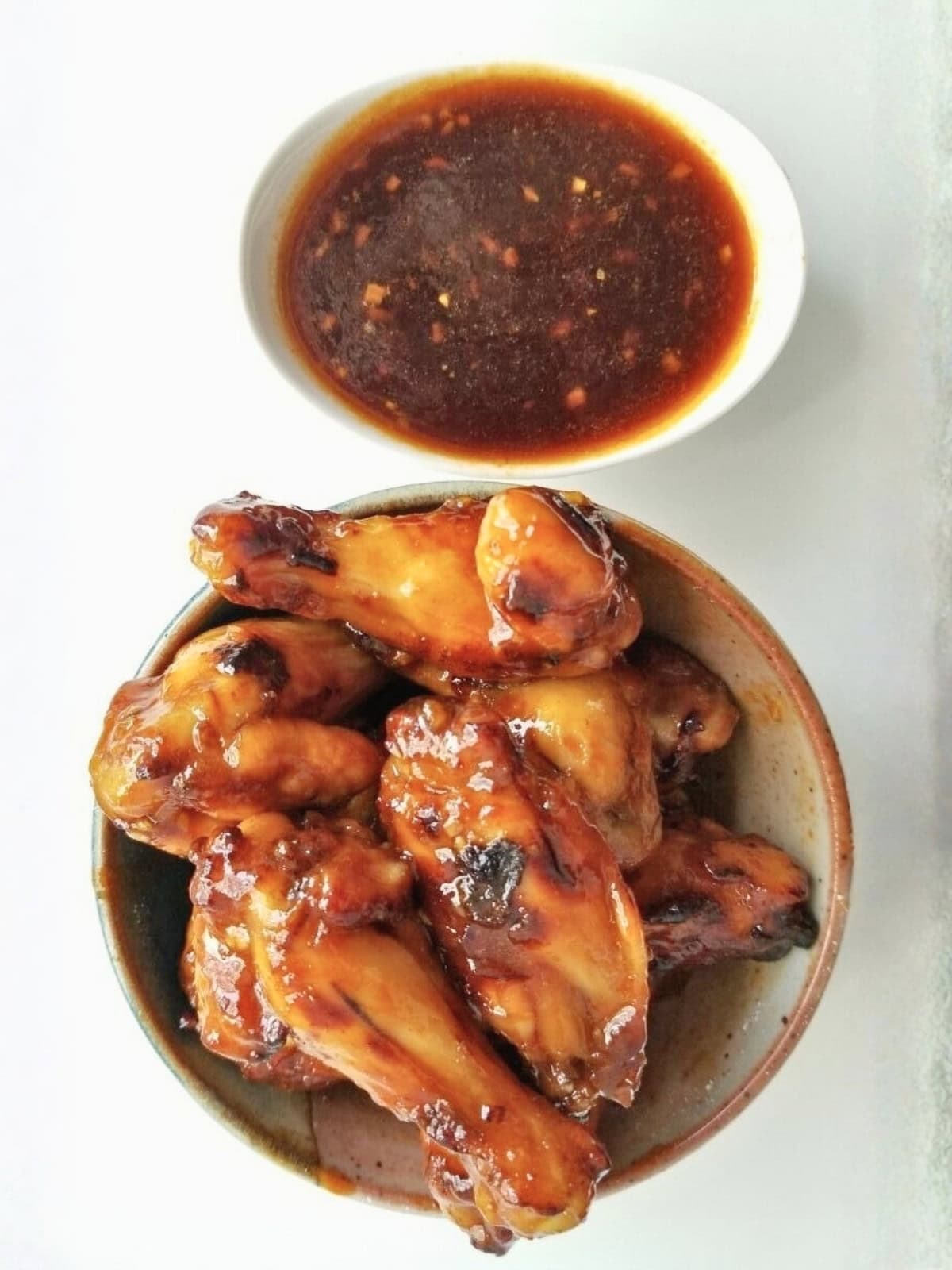
5-Minute Honey Sriracha Sauce
Ingredients
- ½ cup honey
- ¼ cup sriracha alt. chili garlic sauce
- 3 Tablespoons soy sauce alt. tamari or coconut aminos
- 2 Tablespoons salted butter
- 2 tablespoons rice vinegar
- 2 large cloves minced garlic alt. 1 teaspoon garlic powder
- 1 teaspoon corn starch + 2 tablespoons hot water alt. arrowroot starch optional; alt. arrowroot starc, tapioca flour
Instructions
- Put the honey, sriracha, soy sauce, butter, vinegar, and garlic into a saucepan and heat everything until melted.
- Stir the mixture well and heat on medium-low for a couple minutes, until everything is simmering. Let it simmer for about 2 minutes before turning off the heat and moving the sauce pan to a cool burner.
- To make it a bit thicker, like a honey sriracha sauce for wings, add 1 teaspoon corn starch) to 2 tablespoons of hot water and immediately stir until combined, then stir the slurry into your sauce.

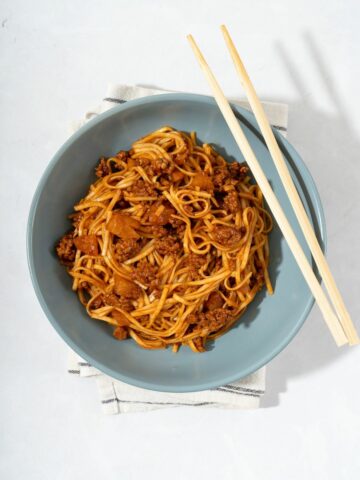
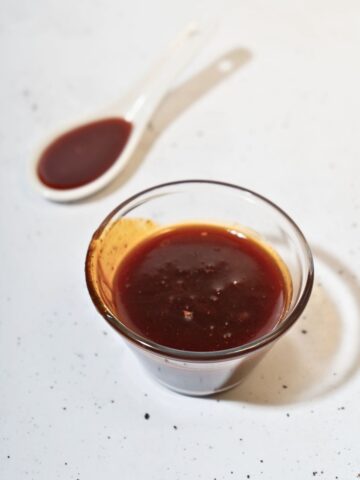
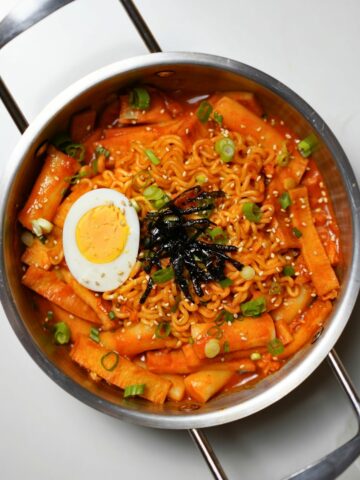
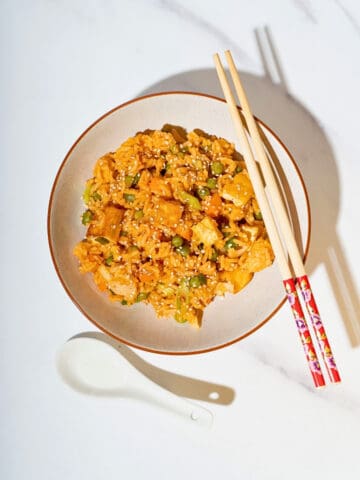

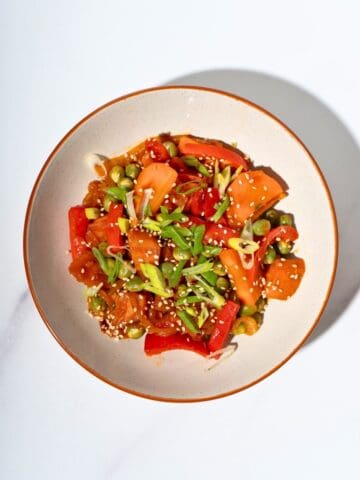
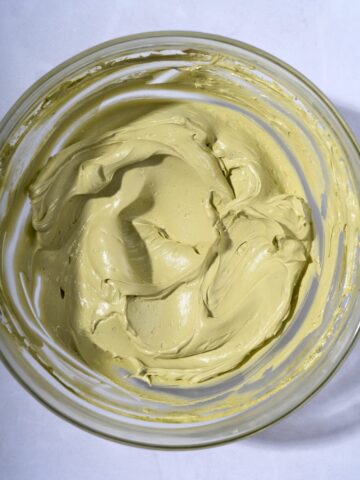
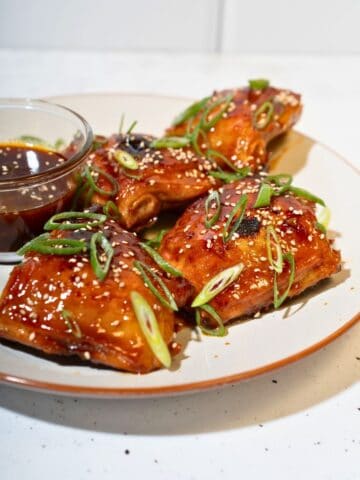
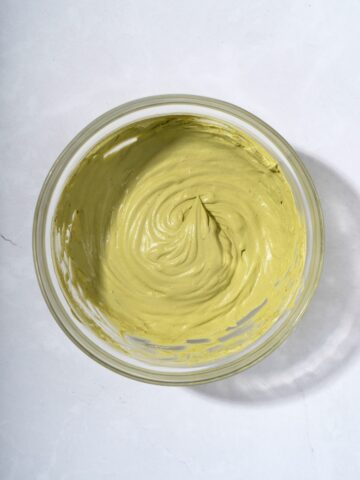
Comments
No Comments